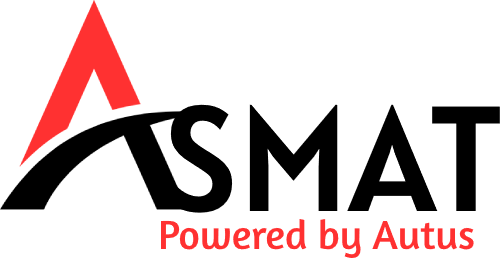
Knowing where your site ranks in Google is an essential component of any marketing strategy. Any marketing strategy must include an understanding of your site’s Google ranking. Ranking on Google’s search engine results pages (SERPs) will determine how easy it is for users to find you, regardless of whether you run an e-commerce store, personal blog, or business website.
But how do you actually check your page ranking on Google? In this post, we are going to explain it and give a few powerful tools, and show how to use this data to grow online presence.
Why Google Rankings Matter
Before jumping into the “how”, let’s understand the “why”. Ranking high on Google increases:
- Website traffic
- Brand visibility
- Lead generation
- Sales and conversions
Most users visit only Google’s first page. If your page is not ranking in the top 10 search results, you are losing out on a significant number of clicks and potential customers.
How Google Ranks Pages
Google has a sophisticated algorithm made of more than 200 ranking factors such as:
- Keyword relevance
- Page load speed
- Mobile responsiveness
- Domain authority
- Backlinks
- User engagement metrics (bounce rate, time on site)
When you will make a good site with all of these factors, then getting a higher rank is more likely. But once you’ve implemented your SEO strategy, how do you check where your pages actually show up?
How to Check Your Page Rank on Google
1. Manual Search (Incognito Mode)
One of the fastest ways to see where you stand is simply do a manual search for your focus keyword. Use incognito or private mode so your search history doesn’t influence the results.
Steps:
- Open an incognito window.
- Type your keyword (e.g., “best web design agency in Delhi”).
- Look for your website in the results.
Limitations: This is not scalable and may not reflect accurate average rankings due to location and personalization.
2. Use Google Search Console (Free Tool)
Google Search Console (GSC) is a free tool provided by Google that gives insights into how your site is performing in search.
Steps to check your rankings:
- Log in to Google Search Console
- Go to the Performance tab.
- You’ll see:
-
-
- Queries your site is ranking for
- Clicks
- Impressions
- Average Position (i.e., average rank)
-
This data is directly from Google, so it’s highly reliable.
3. SEO Tools (Free & Paid Options)
When your rankings are the only thing that matters, you want deeper insights into where and how to improve them. You need professional SEO tools:
a. SEMrush
Shows ranking positions, keyword difficulty, and competitor analysis.
b. Ahrefs
Known for backlink data and accurate keyword tracking.
c. Ubersuggest
Beginner-friendly and affordable.
d. SERProbot (Free)
Quick and simple tool to check rank for a keyword and URL.
With these tools, you can track your keywords daily, see ranking changes, and export reports.
4. Browser Extensions
There are some browser extensions such as Keywords Everywhere, MozBar and SEOquake that can provide you with things like keyword position data, competition metrics or on-page SEO checks – all within your browser.
How Often Should You Check Your Rankings?
Checking your rankings once or twice a week is sufficient for most websites. Daily tracking might be necessary for aggressive SEO campaigns, but rankings naturally fluctuate, so don’t panic over minor day-to-day changes.
How to Improve Your Google Rankings
If your page isn’t ranking where you want it to, here are a few key things to focus on:
- Optimize Title Tags & Meta Descriptions
- Target Long-Tail Keywords
- Improve Page Load Speed
- Create High-Quality, Engaging Content
- Build Authoritative Backlinks
- Ensure Mobile Responsiveness
All of these topics are covered in ASMAT’s digital marketing offline course in Delhi, where students learn SEO hands-on with real-world projects and mentorship.
Importance of Local SEO for Ranking in Delhi or Nearby Regions
If your business operates locally (e.g., a restaurant or institute in Delhi), optimizing for local SEO is essential. This means:
- Claiming your Google Business Profile
- Getting listed on local directories
- Using location-specific keywords (e.g., “digital marketing institute near Connaught Place”)
Tracking Success: More Than Just Rankings
While rankings are important, also monitor other key metrics such as:
- Organic traffic (Google Analytics)
- Click-through rate (CTR) (Google Search Console)
- Bounce rate and time on site (User engagement)
- Conversions and goals (Are people taking action?)
A page that ranks #1 but doesn’t convert is less valuable than one that ranks #5 but brings in qualified leads.
FAQs: Checking Your Google Ranking
Is it free to check my page rank on Google?
Yes. You can search manually on Google, or use free tools like Ubersuggest to check them without paying.
Why do rankings change frequently?
Google updates its algorithm regularly, and rankings can also be affected by competitor activity, user behavior, mobile vs. desktop searches, and seasonal trends.
Can I check rankings for specific cities like Delhi or Mumbai?
Yes, there are tools (such as SEMrush and Ahrefs) which you can use for location based tracking. You can also use a VPN to simulate searches from particular locations.
How long does it take to rank on Google?
Depending on the keyword difficulty, competition and how much SEO work is done, new pages may take 3 to 6 months from being published in order for them to rank. There are some keywords that need more time and there are low-competition ones which may even rank faster.
Do I need a tool to track rankings or can I do it manually?
Manual checks work for a few keywords but are not scalable. SEO tools provide more accurate, consistent, and location-independent data, especially when managing multiple pages or clients.
Which is the best course to learn SEO practically?
One of the effective methods is to start your career as a digital marketer by doing Asmat’s offline courses in Delhi. It gives you live projects, mentorship and specific SEO modules designed to hit the real world running.
Checking your Google page rank is not just about ego, it’s a strategic move that helps you measure performance, identify opportunities, and adjust your SEO strategy effectively. Whether you’re a business owner, blogger, or digital marketing enthusiast, knowing where you stand helps you aim higher.
By using tools like Google Search Console and SEMrush, and implementing smart SEO practices, you can steadily climb up the rankings and boost your visibility.
If you want to master SEO and track your success like a pro, consider joining ASMAT’s digital marketing offline course in Delhi, where you’ll learn how to optimize, track, and scale your online presence from scratch.
